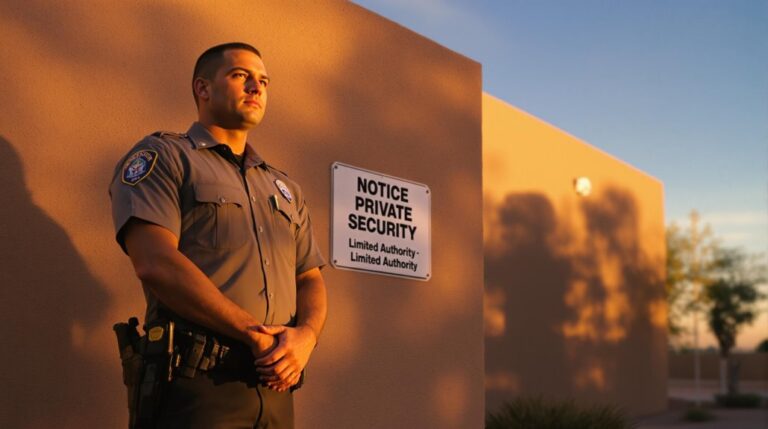Fortress of Safety: Unveiling Stadium Security Secrets
Step into the world of stadium security, where every corner holds a carefully crafted layer of protection to ensure your safety.
As you gaze around the stadium, have you ever wondered about the unseen measures that work tirelessly to maintain order and security?
From the moment you arrive, a complex web of security protocols and advanced technologies are in play, all working together to ensure a secure environment for the event.
But what exactly goes on behind the scenes to make this happen?
Join us as we unravel the intricate secrets that form the fortress of safety around stadiums, providing you with a sense of security that goes beyond what meets the eye.
Comprehensive Security Strategies for Stadiums: From Threat Assessment to Cybersecurity Measures
- Thorough threat assessments and early addressing of vulnerabilities play a crucial role in developing a comprehensive security strategy for stadiums.
- Strict access control protocols, including ticket checks, baggage checks, and metal detectors, contribute to maintaining a safe environment within the stadium.
- Infrastructure and video surveillance, such as perimeter protection, access control points, and surveillance cameras, are integral components of stadium safety and help prevent, respond to, and mitigate security threats.
- Cybersecurity considerations, including protecting sensitive data and maintaining operational integrity, are essential in ensuring stadium safety and minimizing the risk of cyber incidents disrupting events.
Pre-Event Security Measures
Implementing thorough threat assessments is essential for ensuring the safety and security of a stadium before any event. Threat assessment strategies are crucial in identifying potential risks early on. Early vulnerability identification plays a significant role in developing a comprehensive security plan. By addressing vulnerabilities before an event, you can effectively minimize potential security threats.
Preventive measures are key in maintaining stadium safety and security. It’s important to conduct thorough inspections to identify and address any weaknesses in the security infrastructure. By doing so, you can ensure a safe and secure environment for all attendees.
Prioritizing early vulnerability identification and implementing effective threat assessment strategies are essential steps in preparing a stadium for a successful and secure event.
Access Control and Verification
Before any event, ensuring the safety and security of a stadium requires strict access control and verification measures to be in place.
Access control technology, such as ticket checks, baggage checks, and metal detectors, plays a crucial role in maintaining a secure environment. Additionally, biometric verification methods are increasingly being used to ensure that only authorized individuals gain entry. These measures are essential for preventing unauthorized access and enhancing overall stadium security.
Reliable security personnel and companies contribute significantly to the effectiveness of these access control protocols. Thorough screening procedures are also implemented to identify and prevent the entry of prohibited items.
As technology continues to advance, the integration of access control technology and biometric verification further strengthens the stadium’s ability to maintain a safe and secure environment for all attendees.
Infrastructure and Surveillance
Effective infrastructure and surveillance are essential for maintaining the safety and security of the stadium.
Stadium surveillance advancements, such as surveillance cameras and sensor systems, aid in monitoring and deterring security threats.
Perimeter protection strategies, including access control points, contribute to preventing unauthorized access.
Advancements in technology continue to improve stadium infrastructure, enhancing the overall security measures.
Reliable security companies play a crucial role in implementing and maintaining these systems.
Ensuring the integrity and functionality of these surveillance and infrastructure components is vital for the safety of all individuals within the stadium.
Cybersecurity Considerations
Cybersecurity considerations play a critical role in maintaining the overall safety and security of the stadium. This complements the advancements in infrastructure and surveillance systems. Addressing cybersecurity challenges is essential to safeguard digital systems and sensitive data.
Data protection measures, including firewalls and regular security checks, are implemented to ensure operational integrity. Additionally, multi-level approaches, such as technology and staff training, are followed to minimize the risk of cyber incidents disrupting events and compromising information.
Prioritizing cybersecurity is integral to stadium safety as it prevents potential disruptions and unauthorized access to sensitive information. By incorporating robust cybersecurity measures, the stadium can effectively mitigate cyber threats and ensure a secure environment for all stakeholders.
Emergency Response Planning and Post-Event Security Measures
How can you ensure the safety and well-being of all participants during emergencies at the stadium?
By implementing thorough emergency evacuation protocols and having well-equipped medical facilities and teams.
Comprehensive emergency response plans cover various scenarios, including coordination between stadium staff, safety, and local authorities for a quick response.
Evacuation plans are designed considering the facility’s layout and capacity.
It’s essential to have well-equipped medical facilities and trained medical teams for treating emergencies.
Effective planning and preparedness are crucial to ensure the safety and well-being of all participants during emergencies.
Additionally, post-event security measures involve thorough inspections to ensure no unauthorized persons or suspicious objects are left in the stadium.
Trained security personnel and police officers manage the flow of the crowd, directing people to designated exits and transport hubs, minimizing potential threats and ensuring visitor safety.

